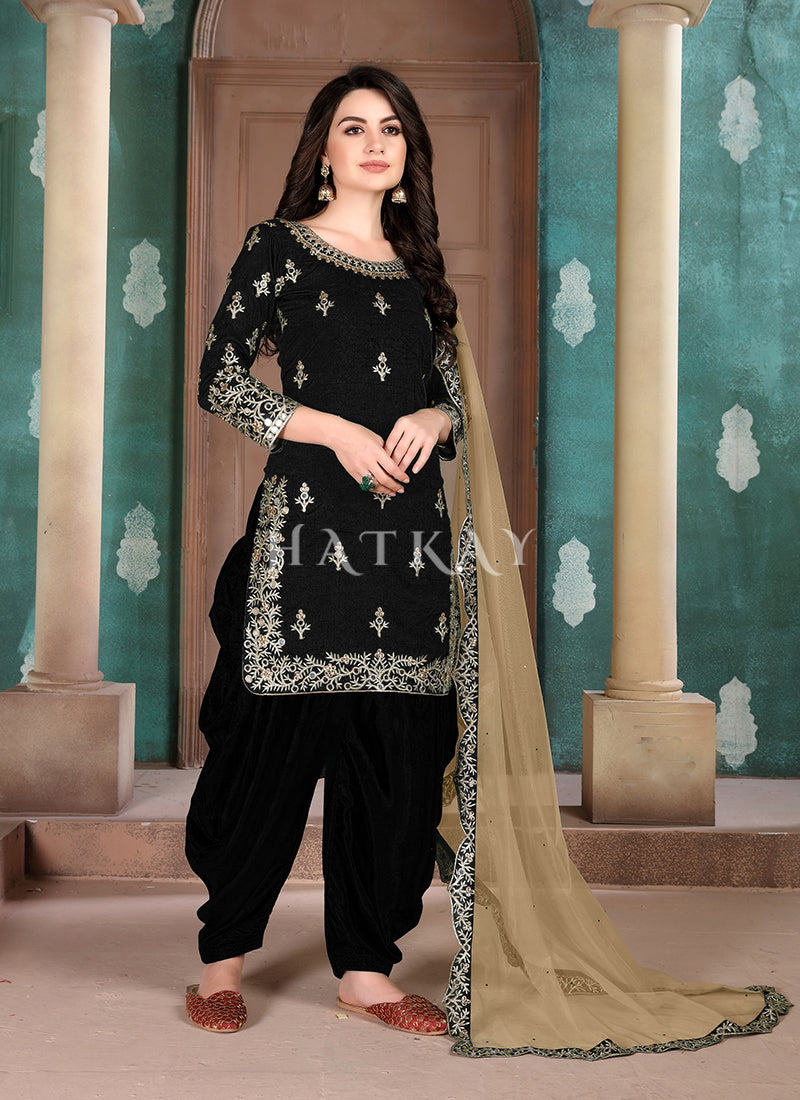Introduction:
In the vibrant tapestry of Indian fashion, Punjabi suits stand out as a vibrant and spirited expression of Punjab's rich cultural heritage. With their bold colors, intricate embroidery, and graceful silhouettes, Punjabi suits embody the essence of traditional elegance and contemporary style. Join us on a journey through the enchanting world of Punjabi suits for women, as we delve into their history, significance, and enduring appeal.
The Origins of Punjabi Suits: A Glimpse into Punjab's Rich Heritage
The history of Punjabi suits dates back centuries, with roots deeply entrenched in Punjab's cultural traditions and social customs. Originally worn by women in rural Punjab, these ensembles were designed for comfort, mobility, and modesty, featuring loose-fitting salwar's paired with long, flowing kameezzes and dupattas. Over time, Punjabi suits evolved to incorporate intricate embroidery, vibrant colors, and luxurious fabrics, reflecting the region's artistic heritage and cultural diversity.
The Anatomy of Punjabi Suits: Celebrating Diversity in Style and Design
At the heart of every Punjabi suit lies its distinctive elements, each contributing to its timeless elegance and charm. The salwar, or trousers, is typically loose-fitting and gathered at the waist, offering comfort and ease of movement. The kameez, or tunic, varies in length and style, from traditional ankle-length designs to contemporary short kurtas, adorned with intricate embroidery, mirror work, and embellishments. Completing the ensemble is the dupatta, a long scarf or shawl, draped gracefully over the shoulders or head, adding a touch of grace and sophistication.
Versatility in Style: From Classic Traditional to Contemporary Chic
One of the most captivating aspects of Punjabi suits is their versatility in style, offering a wide range of options to suit different tastes, preferences, and occasions. Whether it's a traditional Patiala suit with its signature pleated salwar, a Phulkari-embroidered suit for festive celebrations, or a modern fusion-inspired design with contemporary cuts and silhouettes, there is a Punjabi suit for every fashion-forward woman. From weddings and festivals to everyday wear, Punjabi suits effortlessly transition from day to night, making them a timeless choice for women of all ages.
Celebrating Cultural Identity: A Symbol of Punjab's Rich Heritage
Beyond their role as a fashionable attire, Punjabi suits hold deeper significance as a symbol of Punjab's rich cultural heritage and identity. Worn with pride during weddings, festivals, and cultural events, Punjabi suits celebrate the region's vibrant traditions, customs, and values. Whether adorned with traditional motifs, religious symbols, or regional insignia, Punjabi suits serve as a visual testament to Punjab's cultural diversity, resilience, and spirit of unity.
Global Influence and Popularity: From Bollywood to the Runways
In recent years, Punjabi suits have gained popularity not only in Punjab but also on the global stage, thanks to their widespread appeal and celebrity endorsements. Bollywood stars, fashion influencers, and international designers alike have embraced Punjabi suits, showcasing their beauty and versatility on red carpets, movie premieres, and social media platforms. This global recognition further solidifies Punjabi suits as a symbol of cultural pride, diversity, and fashion excellence, transcending borders and captivating audiences around the world.
Conclusion:
In the colorful tapestry of Indian fashion, Punjabi suits stand as a timeless symbol of tradition, elegance, and cultural heritage. From their humble origins in rural Punjab to their contemporary interpretations on global runways, Punjabi suits continue to captivate audiences with their timeless beauty and grace. As we celebrate the enduring allure of Punjabi suits, let us also honor the traditions, customs, and craftsmanship that have shaped their timeless appeal. Whether worn for weddings, festive celebrations, or everyday wear, Punjabi suits remain an eternal embodiment of beauty, tradition, and cultural pride for women everywhere.













